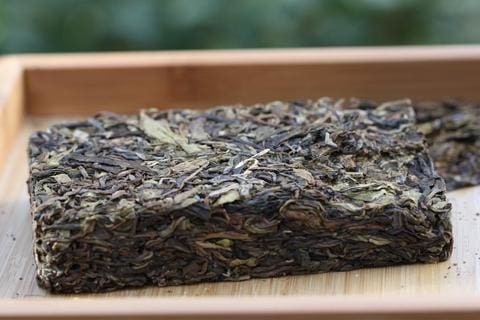How Can You Get the Most Out of your Pu-erh?

Pu-erh is beloved by tea enthusiasts worldwide. The pressed cakes, often wrapped in eye-catching packaging, come in a medley of beautiful colors, and the range of exotic, complex flavors that each tea offers ensures that there is a pu-erh out there for every palate. It is not difficult to see why this tea belongs in a category of its own, and its especially long shelf life is a testament to this uniqueness, promising not just good tea over time, but better tea.
This same degree of flexibility, however, also leads to some confusion, and sometimes, pu-erh drinkers will accidentally ruin their tea, failing to entertain some important considerations from Storage 101, such as never storing their tea in an area with a strong scent or odor.
While those kinds of tips might seem like common sense, there’s still a chance to get it wrong, and these odds only increase if you are planning on any sort of long-term storage. To help prevent any unhappy outcomes, we’re going to share a few storage failsafe’s to ensure that you’re getting the most out of your pu-erh tea, guaranteeing a good cup before its too late.
Storage Conditions
We’ve mentioned it before, but this is so fundamental to pu-erh storage that it is worth emphasizing: your storage conditions matter.
There are certainly some similarities in basic storage etiquette between your regular teas and pu-erh—such as avoid sunlight or avoid moisture—but pu-erh storage also has a fair share of unique rules.
Unlike regular teas, for instance, you want there to be some air flow and you want there to be some humidity (60–85%), you want the temperature to be mild, and most importantly, you want these conditions to be relatively stable, especially over time. Without these guidelines in place, your prized pu-erh could end up at one extreme or another, astringent and bitter or, worse, moldy.
Remember, however, that these rules apply only when you’re deliberately trying to age your pu-erh. If and when it develops a flavor that you particularly enjoy, you’ll want to arrest the aging process by storing it in an airtight container and a cool, dry place.
Keep a Tasting Journal
A tasting journal is always a good idea for any tea drinker. It is a fun and creative way to train your palate, and it helps you remember which teas you’ve tasted and how much you enjoyed them. Rather than risk confusing your Wuyi Shui Xian oolong with your Wuyi Shi Ru Xiang, your journal can show you exactly which tea you tasted, when you tasted it, and how much you liked it.
But the tasting journal is not just a creative outlet.
There simply is no other way to keep track of whether your teas have changed in flavor and freshness without one. We have a tendency to rely on our memory, and while this can help to a degree, it is nowhere near as reliable as a journal that tracks the date the tea was sampled along with a few notes on the quality, colors, and flavors.
When it comes to pu-erh, the journal is indispensable in tracking its changes from the day it was purchased to the day it is brought out of storage, especially if you plan on aging your pu-erh for more than a year.
Taste Regularly

But knowing how your pu-erh tastes compared to day one when you bring it out of storage is one thing; knowing when to pull it out of storage is another.
Whether or not you decide to keep a tasting journal, there is only one way to know when your pu-erh is ready to be enjoyed: you have to taste it regularly. This is arguably one of the biggest mistakes that pu-erh enthusiasts will make, failing to taste their pu-erh as it is aging.
By tasting regularly, you can detect when your pu-erh is starting to taste “off,” giving you an opportunity to make adjustments to your storage conditions in order to salvage it. Some pu-erh drinkers, for instance, have noticed their tea just beginning to absorb an unpleasant odor, and by identifying it early, they were able to prevent this odor from hopelessly ruining their tea.
If you want to guarantee that your pu-erh is at peak flavor, you’ll want to break off a little of your pu-erh cake and infuse it every 6–12 months. By doing this, you ensure that your pu-erh is aging as expected, and you might even catch some storage problems before it is too late.
